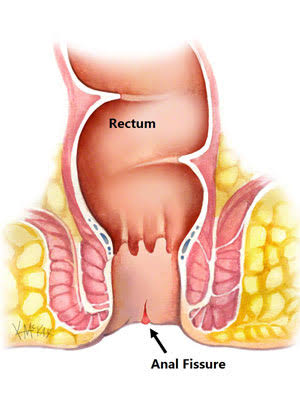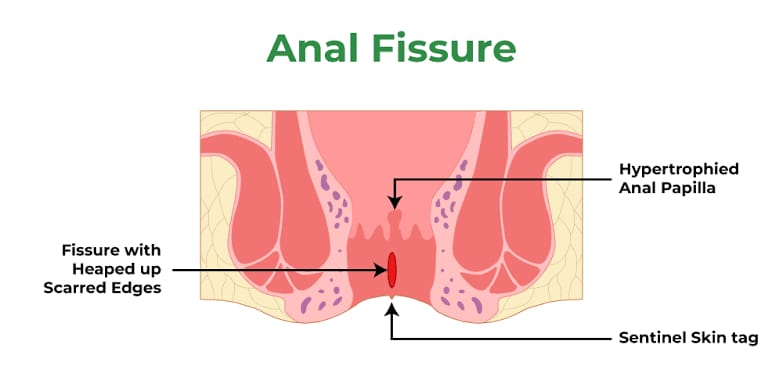Anal Fissure
An anal fissure is a small tear in the lining of the anal canal. Anal fissures may be noticed by bright red anal bleeding on the toilet paper. This type of tear may develop in adults from passing hard or large stools during bowel movements.
Anal fissure is also common in infants between 6 and 24 months. This is most often seen in males.
The main signs and symptoms of an anal fissure:
- Pain or burning during bowel movements.
- Bright red blood on the outside of the stool or on toilet paper wipes after a bowel movement
- Itching or irritation around the anus
- A visible crack in the skin around the anus
Causes of anal fissure:
- Large or hard stool passing through the anal canal
- Constipation and straining during bowel movements
- Inflammation of the anorectal area, such as is caused by inflammatory bowel disease (IBD)
If you have fissures, you know that these little tears can make your life or at least your sitting life—miserable. They burn, they sting, and they often bleed.
Homeopathic treatment of anal fissure:
Acute fissure may resolve spontaneously. However the treatment we offer is to those with chronic fissures failing to heal or those experiencing frequent relapses. The researched remedy chosen after thoroughly investigating the probable causes helps in curing fissures, relieve chronic constipation and improve anal muscle tone. No need of surgery at all.


